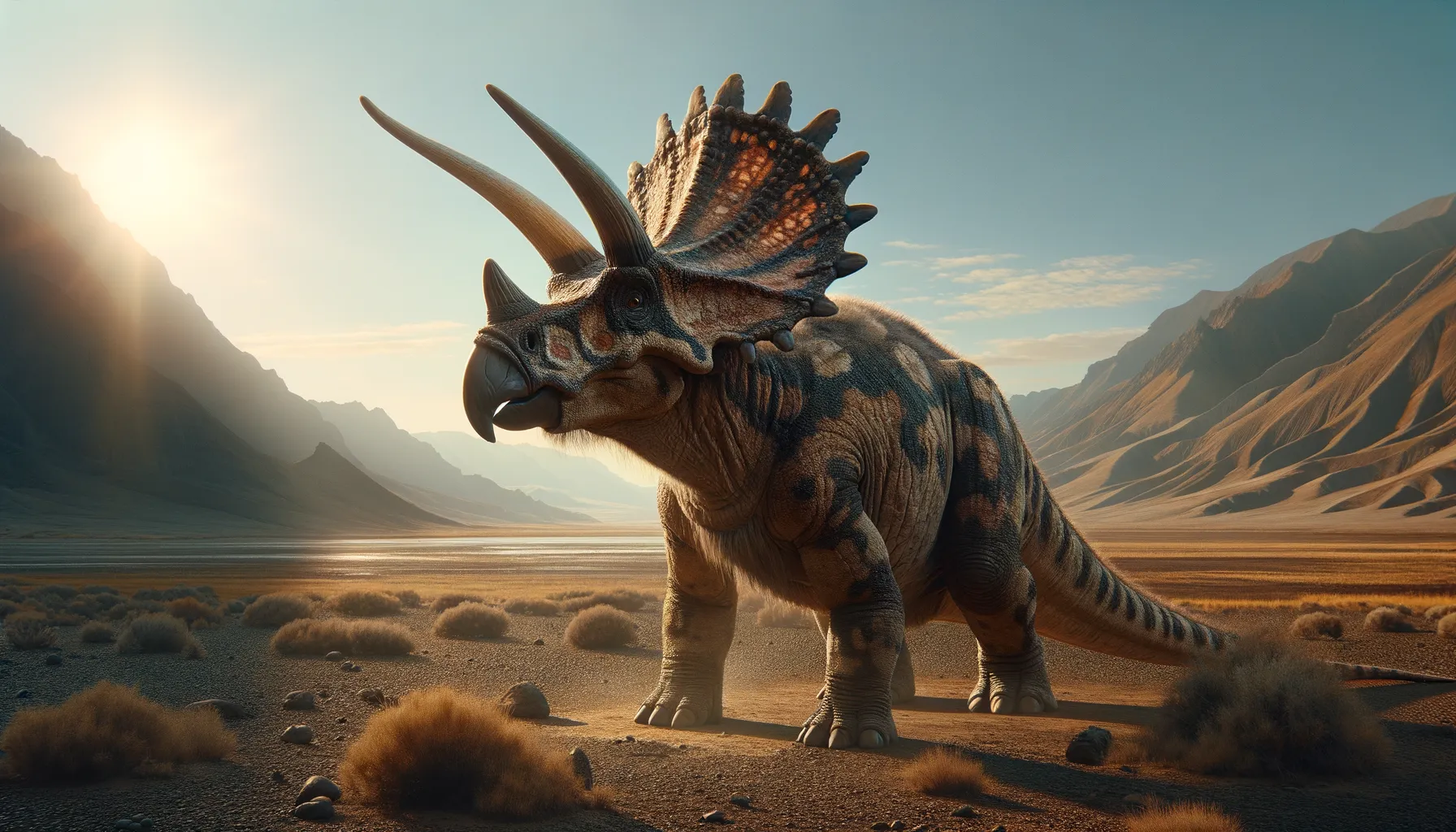
Lamaceratops
A small frilled traveler of ancient lands.
Period
Cretaceous
Length
Approximately 1.5 meters in length.
Height
Stood roughly 1 to 1.5 meters tall.
Weight
Estimated to weigh around 50 kilograms.
Lamaceratops was a small ceratopsian dinosaur from the late Cretaceous period, recognized for its distinctive frilled skull and beak. Found in Mongolia, it belonged to a group known for having horns and elaborate frills, although its fossil findings are sparse. This dinosaur likely lived in a warm, arid environment where it roamed the landscape in search of vegetation. Its size suggests it may have been prey for larger carnivorous dinosaurs of its time.
Diet
Lamaceratops was likely herbivorous, feeding on ferns, cycads, and conifers. It used its beak to clip leaves from plants that could be rather tough.
Hunting
Being herbivorous, it did not hunt but possibly foraged for food in groups. This behavior might have helped them avoid predators by staying in numbers.
Environmental challenges
Lamaceratops faced challenges from predators and limited vegetation. The changing climate of its time could have led to varying resources. Additionally, it had to compete with other herbivores for food sources. Floods and droughts might have been recurring natural phenomena that influenced its survival.
Speed
Lamaceratops was relatively slow-moving.
Lifespan
Its lifespan is not well-documented.
First discovery
Discovered in Mongolia in 2003.
Fun Facts
- Lamaceratops was a small ceratopsian dinosaur that lived during the Late Cretaceous period.
- Its name means 'Lama Horned Face' due to its distinct horn appearance, even though it had no actual horns.
- Lamaceratops fossils were first discovered in Mongolia, offering a glimpse into prehistoric life in Asia.
- It was closely related to more famous horned dinosaurs like Triceratops, but was significantly smaller in size.
- Despite its name, it's still debated by scientists whether Lamaceratops is a distinct genus or just a juvenile form of another dinosaur.
- Lamaceratops was likely a plant eater, grazing on the lush vegetation of its time.
- As a ceratopsian, it had a beaked mouth perfect for its herbivore diet.
Growth and Development
Lamaceratops likely underwent significant growth from hatchling to adulthood. Its frill and beak developed as it matured, possibly assisting in feeding and defense. Its social structure may have played a role in its development, influencing growth through interaction.
Habitat
This dinosaur inhabited areas that were warm and relatively dry. Open environments with scattered vegetation would have provided both food and shelter. Water sources, such as rivers and lakes, were vital for hydration and may have acted as congregating spots.
Interaction with other species
Lamaceratops coexisted with various other dinosaur species, some of which were predators. It might have formed herds for protection against threats. Mutual agreements with other herbivores in food sharing might have occurred.
Natural lifespan
Its natural lifespan remains a subject of study.
Reproduction
Reproduction was likely egg-based, with nests built in hidden or protected areas. Parents might have protected the nest from predators. Hatchlings were possibly dependent on parents for some initial period.
Social behaviour
It likely lived in small groups or herds for added protection. Social structures may have assisted in grazing activities. Groups also aided in communal protection against predators.
Fossil locations
Fossils have primarily been discovered in Mongolia, although few in number. This region has yielded numerous dinosaur fossils, suggesting a diverse ancient habitat. Lamaceratops' fossils are a crucial part of understanding ceratopsian evolution.
